Mediterranean
Project
Monaco's
expansion
A growing number of people are looking to call Monaco their home. But land is scarce in this second smallest country in the world. Now it has decided to expand its territory by reclaiming land from the Mediterranean Sea.
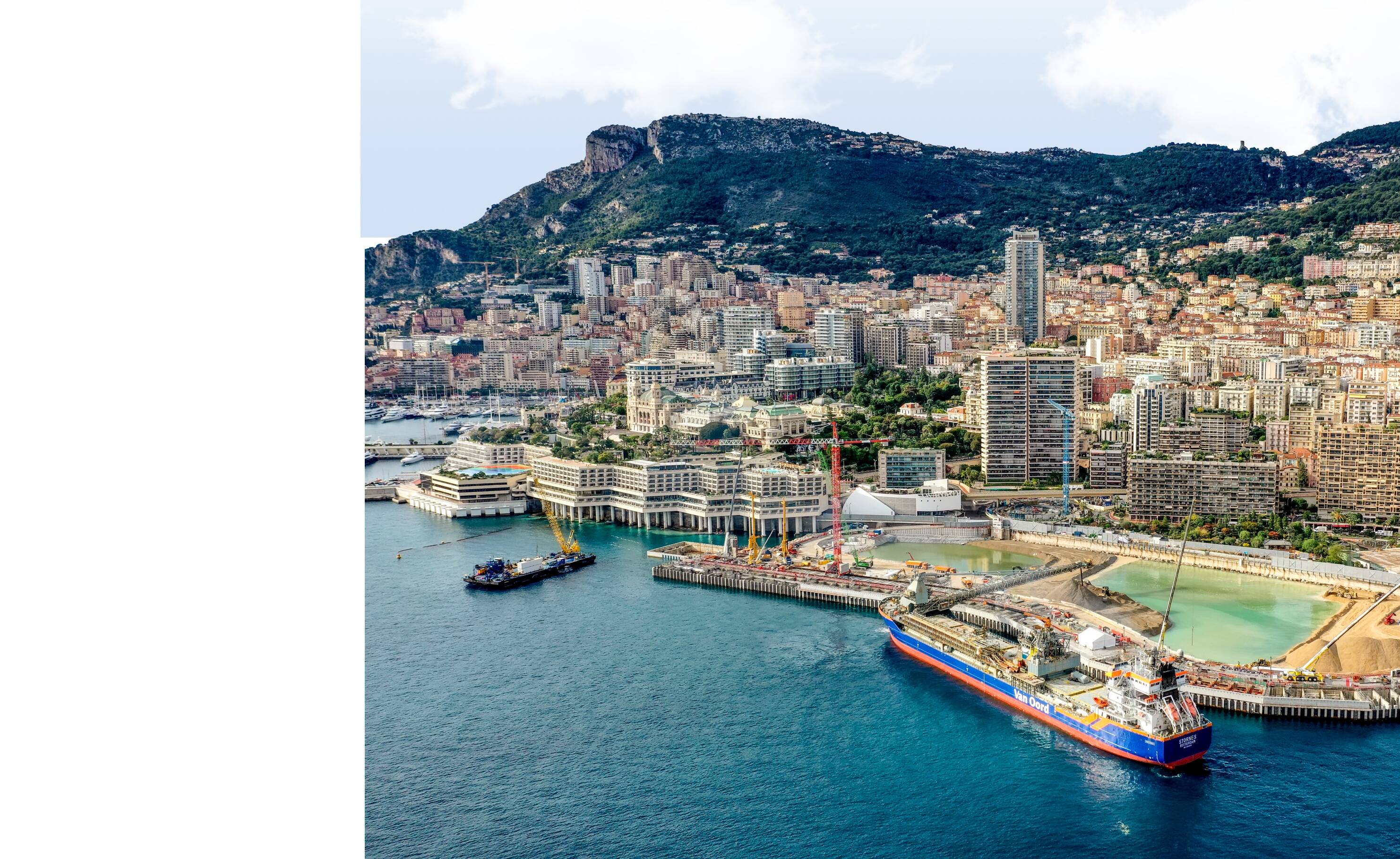
© Bouygues Travaux Publics

Monaco’s 38,000 residents currently live on just over 2 square kilometres of land - a surface area smaller than New York’s Central Park. With an estimated 2,700 people expected to move to Monaco by 2026, the issue of space has become critical.

Christophe Hirsinger
Project Director Bouygues
Travaux Publics
Land reclamation is not new to Monaco. Since reclaiming its first land in the late 19th century, the country has expanded its territory by over 20% through various expansions. Now it has embarked on a new project to reclaim 6 hectares of residential and commercial space that will accommodate 1,000 residents.
Main contractor of the maritime infrastructure, Bouygues Travaux, has installed 18 caissons to form a protective seawall surrounding the reclaimed land. These watertight chambers weigh 10,000 tonnes each and are 26 metres tall. The new shoreline is designed to follow the contours of the existing shoreline so that marine currents will not be disrupted. Van Oord’s flexible fallpipe vessels Nordnes and Stornes were deployed to fill in the space inside the caissons.
©Bouygues Travaux Publics
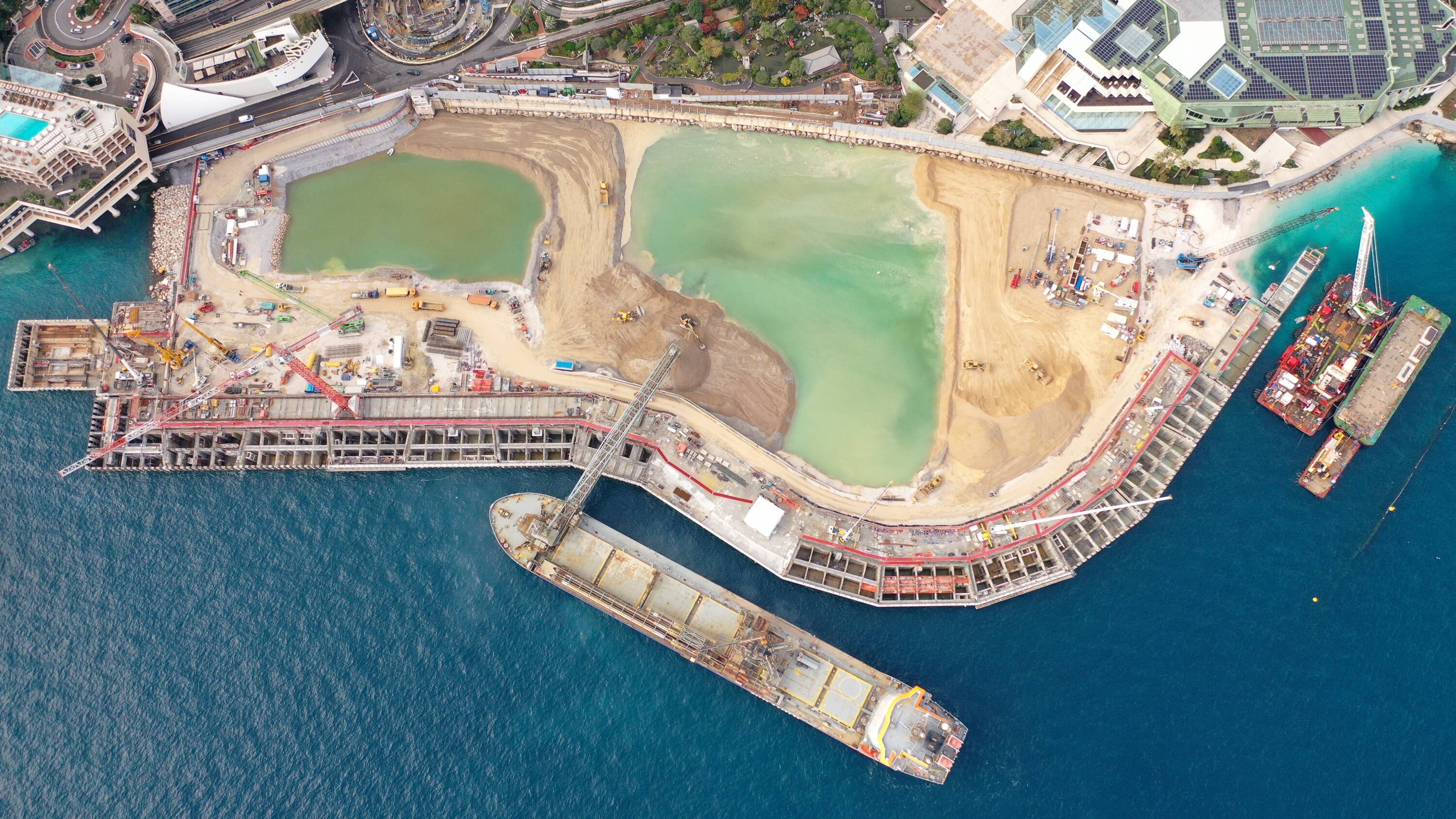
‘With a loading capacity of 25,000 tonnes each, both vessels were able to install 50,000 tonnes of rock every three days. By comparison, supplying the same amount of rock over land would have required a large lorry driving through the small and busy streets of Monaco every two minutes. As you can imagine, this would be impossible. To get the required amount of rock in place in time, transportation in large volumes over sea was essential.’
Marcel Tuin, Project Director Van Oord
©Bouygues Travaux Publics
Perfect team
The Nordnes and Stornes were a perfect team for this job, which required installing 900,000 tonnes of small rock, within the scheduled timeframe. Both vessels have a dynamic positioning system, which automatically maintains the vessel’s position. This eliminated the need of anchoring, which was prohibited on the project site. Besides, these flexible fallpipe vessels are equipped with a large discharging boom, allowing them to install rock over the side behind the seawall.
While the flexible fallpipe vessels were perfectly suited for the job, it was still quite an extraordinary project for them. They are usually deployed to install rock on a sea or river bed when a fallpipe is needed to protect or stabilise underwater structures or to level the bed. These projects often take place in the North Sea. The sun-drenched Mediterranean was quite a change of scenery and climate for the crews.
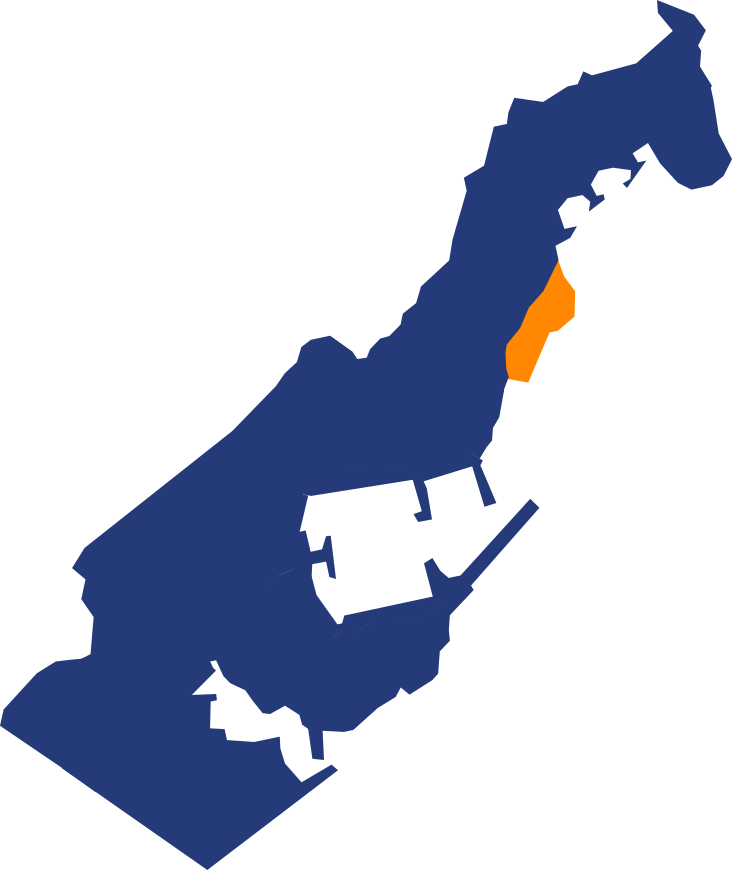
Monaco
38,000
residents
200
hectares
Expansion
1,000
residents
6
hectares
Taking turns
In April 2019, the Stornes already installed 125,000 tonnes of rock. Since last October both vessels have been deployed. The Stornes loaded rock in Piombino, Italy and the Nordnes in Marseille, France. The schedule was set up so that one of the vessels would be installing rock in Monaco while the other was taking its next load. The interplay between the two resulted in great efficiency.
Van Oord completed the job in December. The land reclamation phase of the project is expected to be finished in 2020, when construction of the civil and residential developments will begin. Besides private residences, the new district will have a landscape park, a seafront promenade, a marina and a central public square. The Grimaldi Forum, a conference and cultural centre, will be extended onto the new land.
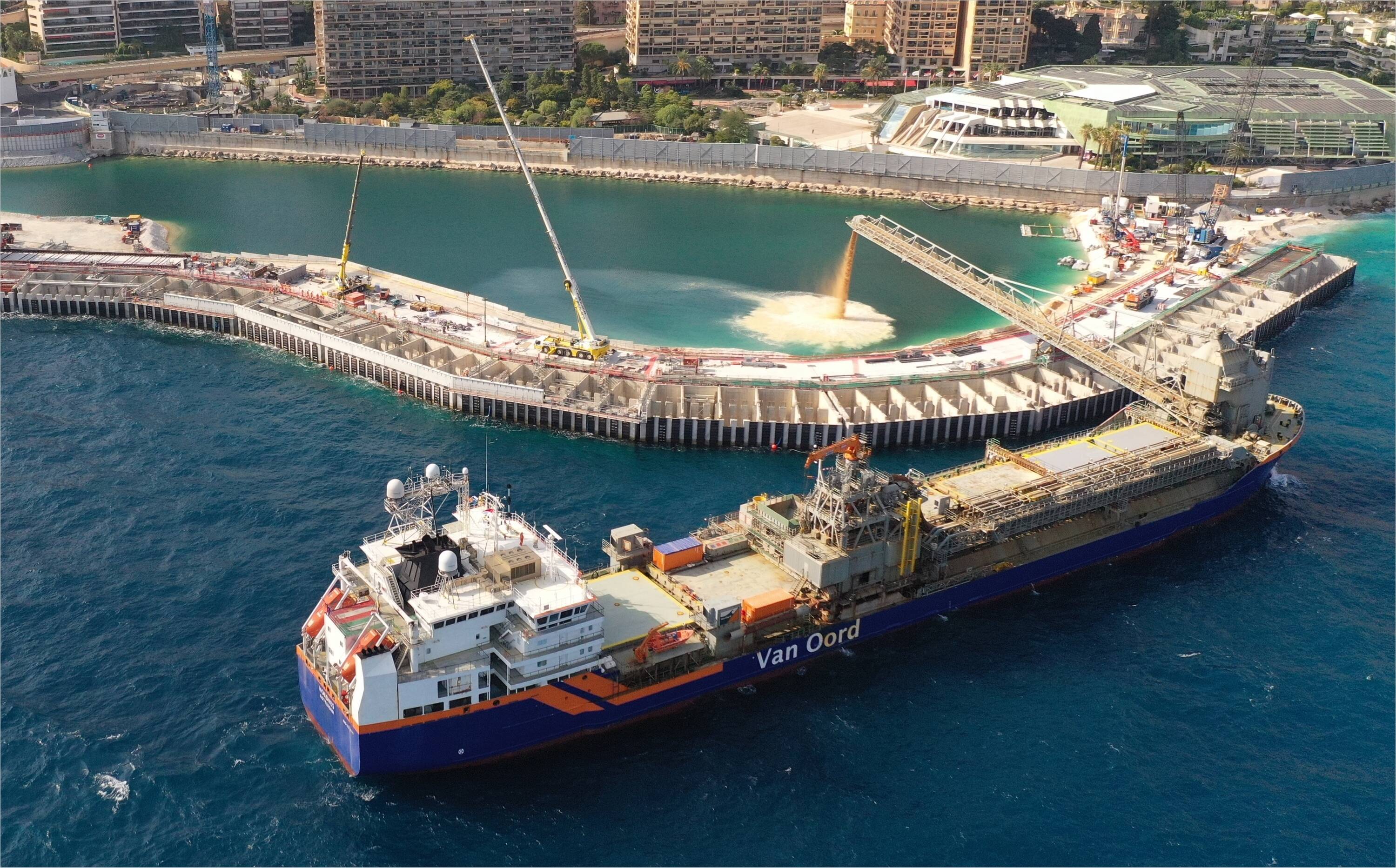

©Bouygues Travaux Publics
Mediterranean
Project
Monaco's
expansion
A growing number of people are looking to call Monaco their home. But land is scarce in this second smallest country in the world. Now it has decided to expand its territory by reclaiming land from the Mediterranean Sea.

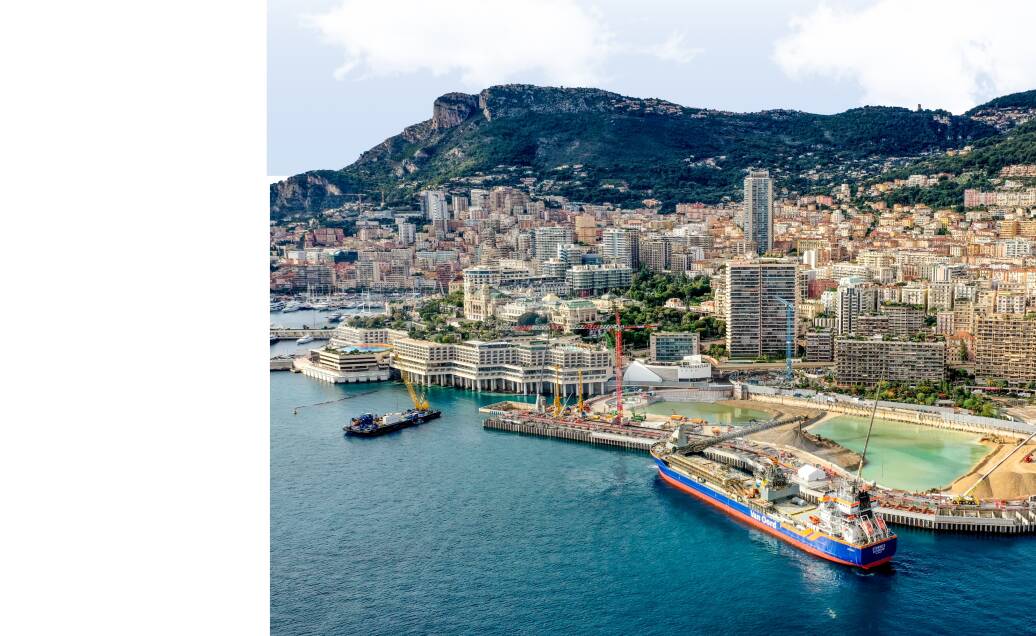

‘With a loading capacity of 25,000 tonnes each, both vessels were able to install 50,000 tonnes of rock every three days. By comparison, supplying the same amount of rock over land would have required a large lorry driving through the small and busy streets of Monaco every two minutes. As you can imagine, this would be impossible. To get the required amount of rock in place in time, transportation in large volumes over sea was essential.’

Christophe Hirsinger
Project Director Bouygues
Travaux Publics
‘’To reclaim the six hectares of land, the infrastructure is built from the sea. With the deployment of its flexible fallpipe vessels, Van Oord offered the most efficient method to construct the reclamation ground.
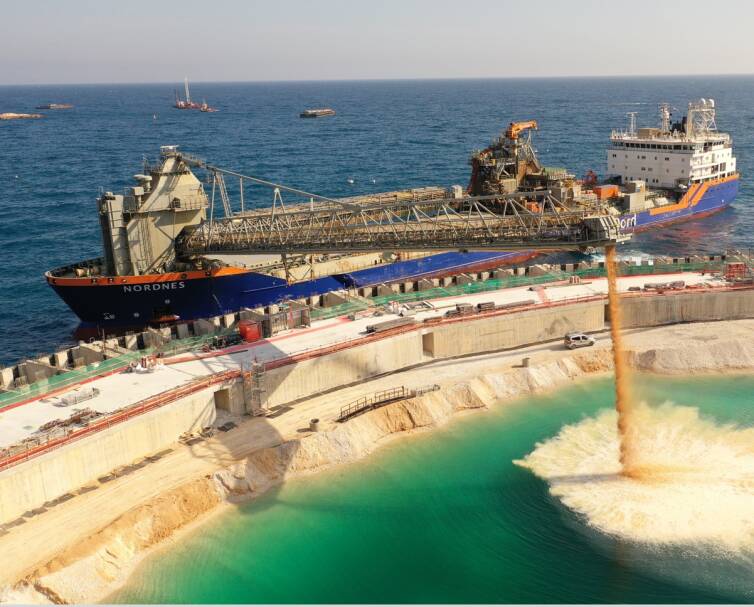

Marcel Tuin,
Project Director Van Oord
Monaco’s 38,000 residents currently live on just over 2 square kilometres of land - a surface area smaller than New York’s Central Park. With an estimated 2,700 people expected to move to Monaco by 2026, the issue of space has become critical.
Land reclamation is not new to Monaco. Since reclaiming its first land in the late 19th century, the country has expanded its territory by over 20% through various expansions. Now it has embarked on a new project to reclaim 6 hectares of residential and commercial space that will accommodate 1,000 residents.
Main contractor of the maritime infrastructure, Bouygues Travaux, has installed 18 caissons to form a protective seawall surrounding the reclaimed land. These watertight chambers weigh 10,000 tonnes each and are 26 metres tall. The new shoreline is designed to follow the contours of the existing shoreline so that marine currents will not be disrupted. Van Oord’s flexible fallpipe vessels Nordnes and Stornes were deployed to fill in the space inside the caissons.
©Bouygues Travaux Publics

©Bouygues Travaux Publics
Perfect team
The Nordnes and Stornes were a perfect team for this job, which required installing 900,000 tonnes of small rock, within the scheduled timeframe. Both vessels have a dynamic positioning system, which automatically maintains the vessel’s position. This eliminated the need of anchoring, which was prohibited on the project site. Besides, these flexible fallpipe vessels are equipped with a large discharging boom, allowing them to install rock over the side behind the seawall.
While the flexible fallpipe vessels were perfectly suited for the job, it was still quite an extraordinary project for them. They are usually deployed to install rock on a sea or river bed when a fallpipe is needed to protect or stabilise underwater structures or to level the bed. These projects often take place in the North Sea. The sun-drenched Mediterranean was quite a change of scenery and climate for the crews.
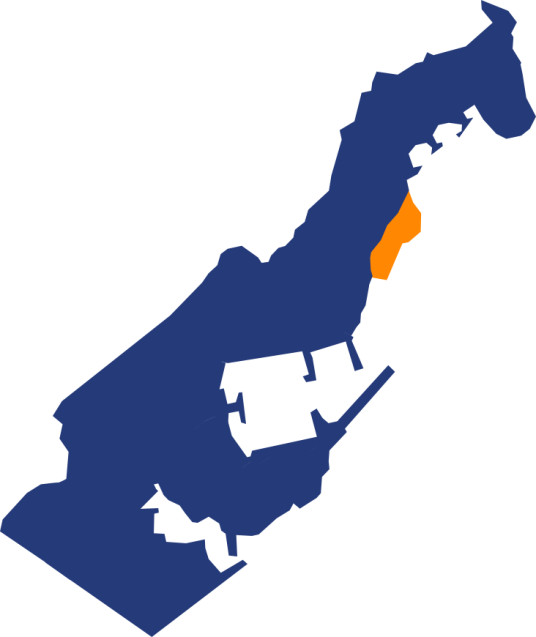
Monaco
38,000
residents
200
hectares
Expansion
1,000
residents
6
hectares
Taking turns
In April 2019, the Stornes already installed 125,000 tonnes of rock. Since last October both vessels have been deployed. The Stornes loaded rock in Piombino, Italy and the Nordnes in Marseille, France. The schedule was set up so that one of the vessels would be installing rock in Monaco while the other was taking its next load. The interplay between the two resulted in great efficiency.
Van Oord completed the job in December. The land reclamation phase of the project is expected to be finished in 2020, when construction of the civil and residential developments will begin. Besides private residences, the new district will have a landscape park, a seafront promenade, a marina and a central public square. The Grimaldi Forum, a conference and cultural centre, will be extended onto the new land.


©Bouygues Travaux Publics






